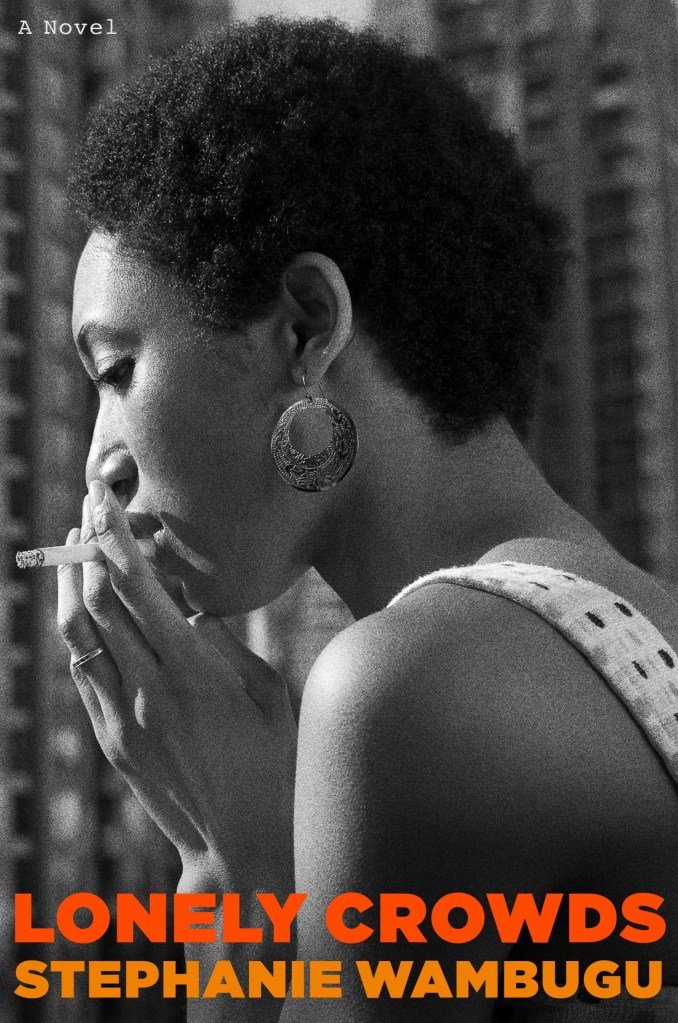

Obsession often does an artist good. That idea she can’t stop thinking about, that uncompleted project that keeps her up at night — such fixations compel her to create, focus her efforts, and keep her returning to the desk, the stage, the studio. But not all obsessions are equally generative.
Stephanie Wambugu’s stimulating debut novel, Lonely Crowds (2025), centers on Ruth, a painter, and Maria, a filmmaker. The two women are pulled into each other’s orbits as children and prove unable, or unwilling, to extricate themselves. “When I met Maria,” a middle-aged Ruth recalls, “I learned that without an obsession life was impossible to live.” But time and again, her devotion to Maria keeps Ruth from living her life, convincing her she is a minor character in her own story rather than its author, even as her career takes her into the supposed upper echelons of the art world.
Ruth’s fascination with Maria is instant: As a nine-year-old, she notices her in line to purchase school uniforms — they are the only two Black girls in their grade — and begins dreaming up their life together. The reality is more complicated. Ruth, the reserved, self-effacing daughter of Kenyan immigrants, and Maria, a rebellious orphan living with her unstable aunt, develop a fast but lopsided relationship. Ruth’s infatuation with the precocious Maria, which straddles the platonic and romantic, goes unrequited, her gestures of care largely unreturned.
But Ruth’s obsession later serves her as a budding teenaged artist: Maria becomes her muse. When Ruth’s father gives her pencils and a sketchbook (a gift, she recalls, that “opened a hatch that would not close again”), she starts drawing “impressionistic, muted half nudes” of Maria — “a girl whose face I’d seen so many times, from so many angles,” she says, “and who still appeared novel and even alarming depending on the light of the hour.” Ruth deems the work “unambitious” in favor of being “allegiant to the model in front of me.”

This is also how Ruth ultimately conceives of her life. Wambugu writes her narrator as indifferent to her own agency, content “riding Maria’s coattails” from their Rhode Island prep school to college at Bard and beyond. As they pack up Ruth’s childhood bedroom, Maria tells her to throw away her treasured drawings of Maria; more allegiant to her model than to her work, Ruth complies. Ruth’s passivity is rendered in prose that can feel limp or frustratingly remote, even as it’s occasionally dotted with sparkling turns of phrase.
The holding pattern continues after college, when Ruth follows Maria to New York City. There, Maria’s wealthy girlfriend bankrolls her films and helps turn her into an art world “it girl,” though it’s unclear how much of her success emanates from her talent rather than the sheer force of her charisma, not to mention her financial cushion. “It was so unsettling how no one ever spoke about money or how they were making it,” Ruth observes after attending a gallery opening with her art collector boss — her first introduction to the New York art scene — where she feels like an interloper. Eventually, Ruth finds a service job and a well-off boyfriend-turned-husband to subsidize her painting practice. By the novel’s end, Ruth’s determination to live in Maria’s shadow means she can hardly recognize, let alone enjoy, her own success as an artist.
Lonely Crowds offers up some pointed critiques of the art world — how many artists’ romantic partners act as their patrons, for instance, or how Black artists are converted into trendy tokens. Wambugu’s writing is most astute, however, when depicting the powerful lure of social mobility. It’s the promise of being lifted out from their hardscrabble surrounds that, ironically, first draws the main characters to careers in the arts, which Maria insists can be extraordinarily lucrative if you’re “any good.” As young women, they seem more enamored with the idea of being artists than with making art.
But glimmers of Ruth’s genuine love of painting sporadically peek through; these are the novel’s most moving and memorable moments. At one point, a teenaged Maria runs away from home, and Ruth decides to make a missing-person flyer, drawing her friend as a means of “transmuting pain into a satisfying picture.”
“As I drew,” she says, “time did not pass and I was not myself. It was wonderful to vanish in this way.” Art, like her relationship with Maria, is another form of self-erasure, but a generative one. Even when people don’t, art loves you back.
Lonely Crowds (2025) by Stephanie Wambugu is published by Little, Brown and Company and available online and through independent booksellers.


